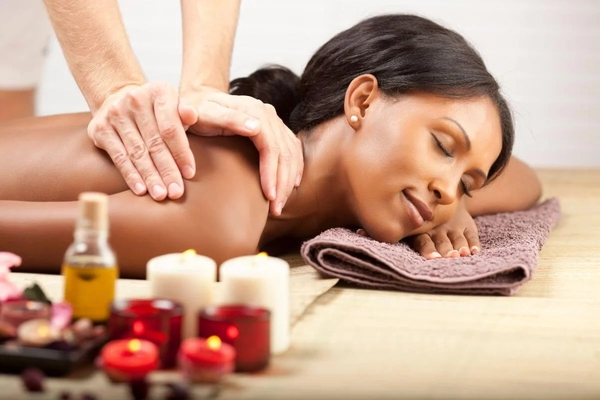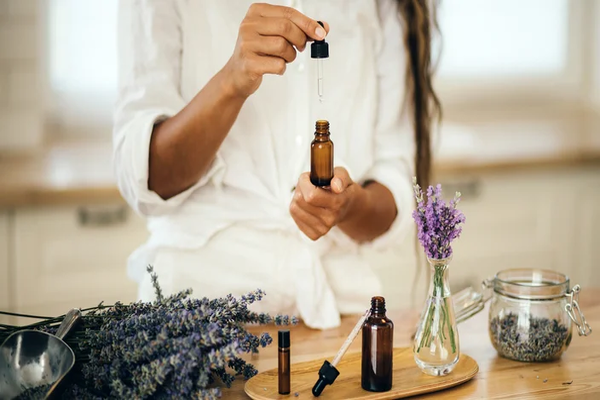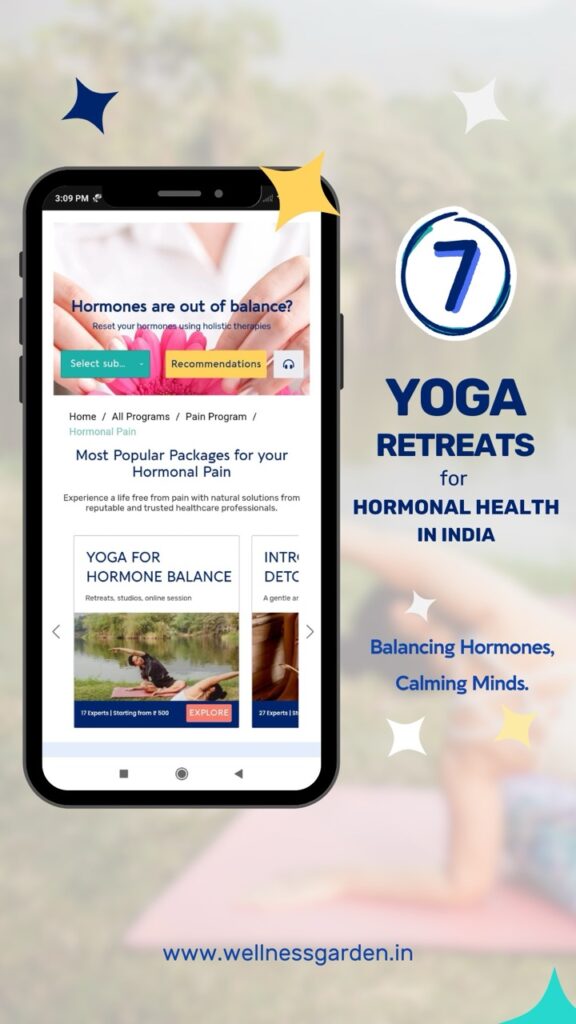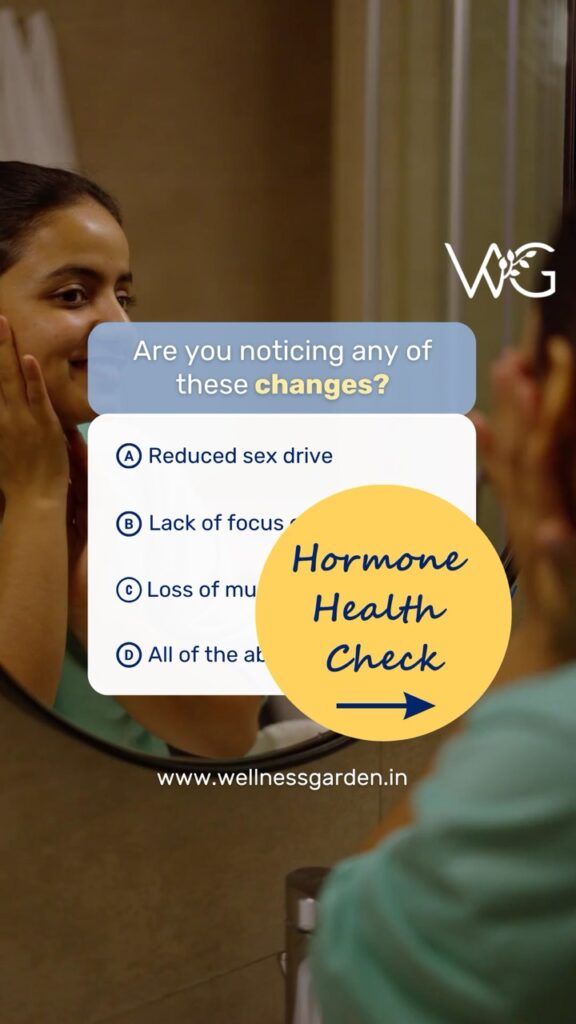7 Surprising Stress-Relief Benefits of Aromatherapy Massage You Need to Know
- Specialties & Therapies
- 4 mins
- March 6, 2023
- NIH
- Mind & Senses, Mindfulness
If daily stress is making you feel tired, weak, or prone to illness, aromatherapy can help restore your balance. Using natural essential oils, this gentle therapy reduces anxiety, improves sleep, and boosts your immunity.
Did you know that while about 7% of adults in India opt for massage, the numbers differ widely worldwide? In China, the figure rises to more than 21% for people managing chronic pain, while Europe averages 5–6% annually. Japan, with over 230,000 licensed practitioners, showcases a deep-rooted culture of hands-on healing. Aromatherapy massage—originating from Egyptian, Indian, and Chinese traditions—has been treasured for millennia. Even Hippocrates, often called the father of modern medicine, valued essential oils for maintaining vitality. Today, plant-based essences such as lemon, chamomile, lavender, cedar wood, and bergamot help ease tension, encourage restful sleep, enhance immunity, and support complete well-being.
Wellness Garden’s digital platform links you to more than 600 certified professionals across India, delivering reliable, side-effect-free approaches that harmonise body and mind. Whether you prefer an in-clinic appointment or a relaxing home session, this time-tested practice is tailored to individual needs—restoring balance, relieving strain, and building long-term resilience.

Understanding Aromatherapy Massage: A Natural Way to Relieve Stress and Restore Balance
Stress affects us all in different ways—whether it’s from work pressure, financial worries, or the daily challenges of life. Finding natural, effective ways to manage stress and care for your mind and body is essential for overall wellbeing.
Aromatherapy massage offers just that—a soothing combination of massage therapy and essential oils that work together to calm your mind and relax your body. As these plant-based oils are absorbed through the skin, they help improve mood, reduce depression , and detoxify the body.
In addition to these physical benefits, the scents of essential oils stimulate the limbic system in your brain, which governs emotions and memories. This makes aromatherapy massage a powerful way to promote both emotional calm and physical relaxation.
The Principles of Aromatherapy Massage
Aromatherapy massage blends the therapeutic qualities of plant essences with skilled touch. Its origins trace back to ancient Egypt, India, and China, with European adoption driven by both spa traditions and early clinical study.
Holistic Integration
This approach unites gentle manual techniques with botanical extracts to encourage physical, emotional, and mental balance. As per a 2022 report by the National Center for Complementary and Integrative Health (NCCIH), combining massage with essential oils can reduce stress and promote overall well-being.
Dermal Absorption
During application, active compounds penetrate the skin and enter circulation, influencing multiple systems. A Guide for Health Care Professionals notes that such absorption can support immune defences and even improve scalp condition.
Olfactory Activation
Inhaling aromatic molecules stimulates the limbic system, the brain’s centre for emotion and memory. A 2017 review in Evidence-Based Complementary and Alternative Medicine found that scents like lavender and bergamot can reduce anxiety in clinical settings.
Individualised Formulation
Each session uses essences selected to meet personal needs—such as chamomile or lavender for relaxation, peppermint for mental clarity, or eucalyptus for respiratory comfort—ensuring treatments remain tailored and effective.
Top 7 Unique Benefits of Aromatherapy Massage
Aromatherapy uses essential oils through inhalation, massage, or baths to promote relaxation and healing. Some powerful benefits include:

1 . Stress Relief and Emotional Balance
Aromatherapy massage calms the mind and restores harmony. Oils like lavender, chamomile, and bergamot influence the brain’s limbic system to ease anxiety and lower stress hormones, as shown in Evidence-Based Complementary and Alternative Medicine.
2. Encourages Restful Sleep
By soothing both body and mind, oils such as lavender and chamomile promote longer, more refreshing slumber. This is especially beneficial for those whose restlessness is linked to mental strain.
3. Relieves Muscle Tightness and Back Discomfort
Mental strain can cause stiffness in the neck, shoulders, and spine. Massage with eucalyptus and peppermint helps loosen muscle fibres, enhance circulation, and ease soreness through their natural anti-inflammatory qualities.
4. Alleviates Headaches and Migraines
Persistent stress often triggers head pain. Peppermint and lavender assist by calming nerves, releasing muscular tension, and improving blood flow to the cranial area.
5. Restores Hormonal Harmony
Prolonged strain can disturb endocrine balance, worsening PMS, menopausal changes, or adrenal fatigue. Clary sage and geranium support regulation, helping ease related symptoms.
6. Strengthens Immune Defences
Ongoing pressure on the body may weaken resistance to illness. Tea tree and lemon provide antimicrobial and cleansing effects, reinforcing the body’s protective mechanisms.
7. Improves Circulation and Vitality
Healthy blood flow delivers oxygen and nutrients to tissues efficiently. Massage with rosemary and ginger stimulates circulation, reduces sluggishness, and increases overall energy.
Combining Aromatherapy with Different Massage Therapies
As aromatherapist Holly notes, blending aromatherapy with multiple natural therapies ensures long-term wellness benefits beyond what single methods can achieve. Such therapies include:
Swedish, Deep Tissue & Hot Stone Massage: Classic treatments enhanced with lavender, chamomile, peppermint, or eucalyptus oils to promote deep relaxation, relieve pain, and improve sleep quality.
Mind-Calming Therapies: Techniques like craniosacral therapy, sound healing, naturopathy and guided imagery paired with aromatherapy help reduce stress, balance emotions, and support memory function.
Safety Tips Before Use Aromatherapy Massage
Aromatherapy massage is safe only when high-quality essential oils are properly diluted. Pure oils—typically steam-distilled or cold-pressed without synthetic additives—are essential for safety. Using low-quality oils or improper dilution (such as mixing with water instead of carrier oils) can cause skin irritation, allergic reactions, or toxicity.
The safety and potency of essential oils also depend on their origin and production methods. Factors like climate, soil, and harvesting influence the oil’s chemical composition. People with respiratory issues, allergies, epilepsy, or pregnancy should avoid certain oils and always consult a healthcare professional before use. Always verify quality certifications and proper dilution before selecting oils for massage.
Relax, Refresh, and Rejuvenate with Wellness Garden
Calm your mind, ease your body, and renew your spirit with aromatherapy massage. This effective therapy helps reduce stress, improve sleep, and strengthen your immune system. The soothing aromas of essential oils enhance relaxation, lift your mood, and ease anxiety and tension.
Aromatherapy complements conventional medicine, supporting your overall wellbeing. Wellness Garden is here to guide you by connecting you with trusted aromatherapy massage centers near you—whether you prefer a clinic visit or a relaxing session at home.
Book your session with Wellness Garden today and begin your journey toward greater health, balance, and vitality.
FQAs
1. Is there an age limit for aromatherapy massage?
It’s safe for most adults, but always consult a therapist for children, seniors, or pregnant women.
2. How long does a typical aromatherapy massage session last?
Usually between 60 to 90 minutes, depending on your needs and focus areas.
3. How do I book a massage with Wellness Garden?
Simply visit our website or connect with our wellness advisor to book a personalised session.
4. Can I combine aromatherapy massage with other therapies?
Absolutely. Aromatherapy massage pairs well with therapies like acupuncture, reflexology, and yoga.
5. Can aromatherapy massage help with hormone balance or PMS?
Yes, many women find relief from PMS symptoms, mood swings, and even menopausal discomfort
- Table of Contents
- • Aromatherapy Massage
- • The Principles
- • Top 7 Unique Benefits
- • Complementary Therapies
- • Safety Tips
- • How WG Helps ?
Recent Posts
Join Our Newsletter
End note from WG Team
WG Team
Disclaimer: This information is provided for educational purposes and should not be construed as medical advice. Please consult with healthcare practitioners before undertaking any changes in wellness routines or adding new therapies.
Latest Blogs
Check out some of your blogs related to your interest.
- November 29, 2025
- Dr. Deepak Chopra
- 3 Mins
- September 18, 2025
- Dr. Piyush Jain
- 2 Mins
- September 12, 2025
- Dr. A. Shaji Bharath
- 2 Mins
- September 10, 2025
- NIH
- 4 Mins





